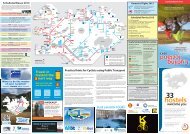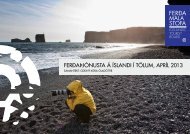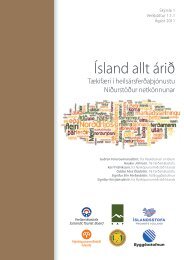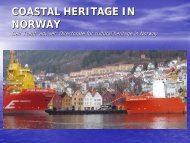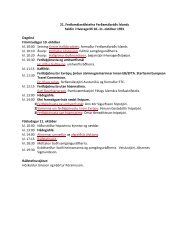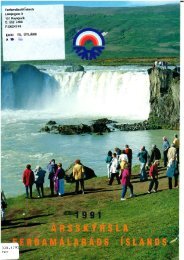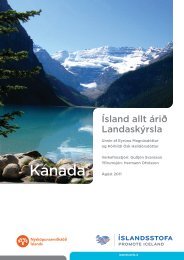Untitled
Untitled
Untitled
You also want an ePaper? Increase the reach of your titles
YUMPU automatically turns print PDFs into web optimized ePapers that Google loves.
networking platforms like Facebook and Twitter, and social media like<br />
travel blogs and video sharing sites shaping tourist and tourism<br />
imaginationings? Another case in point is photography. Although it has a<br />
long reputation of being essential for the touristic experience it appears<br />
that:<br />
Few studies have analysed how tourists picture the places the[y] visit;<br />
what sort of photographs they take and how they exhibit and circulate<br />
them (Ek et al. 2008, p. 136, see also Scarles 2009, p. 465).<br />
Another related aspect of this second facet of the visual paradox in<br />
tourist studies is that when tourist researchers have been using images it<br />
seems that the visual often has been relegated to stories about the visual in<br />
plain text, or that they are inserted merely for illustrative purposes:<br />
There seems to be a profound mismatch between the importance<br />
assigned to the visual in terms of its relation to ‘knowing’ and the low<br />
status of visual data in social research in general and in tourism studies<br />
in particular (Feighey 2003, p.79).<br />
If images are on the move, through different mediums in different<br />
guises, textual and visual, and if they (dis)appear under a variety of<br />
circumstances and locations, then this suggests a need to transcend<br />
traditional research methodologies where:<br />
imagery is a non-empirical phenomenon that occurs when a discourse<br />
fixes social experience in terms of a language shared by some social<br />
group. In tourism studies, researchers have yet to establish the<br />
relationship between the phenomenon of imagery and the mechanism of<br />
its discourses, the iconography of the tourism experience (Hunter 2008,<br />
p. 356).<br />
Research in tourism studies then needs to place, and<br />
methodologically approach, images in a broader frame, rather than, say,<br />
conceive of images as objects travelling in a neutral medium between<br />
sender and receiver. In what ways, for example, may film influence<br />
people’s travel decisions and induce them to visit, or avoid visiting,<br />
particular destinations they have seen on the cinema screen or on TV?<br />
How do images from the movies reverberate with those in books,<br />
advertisements, “blogs” or, for that matter, good old photography? How<br />
89



